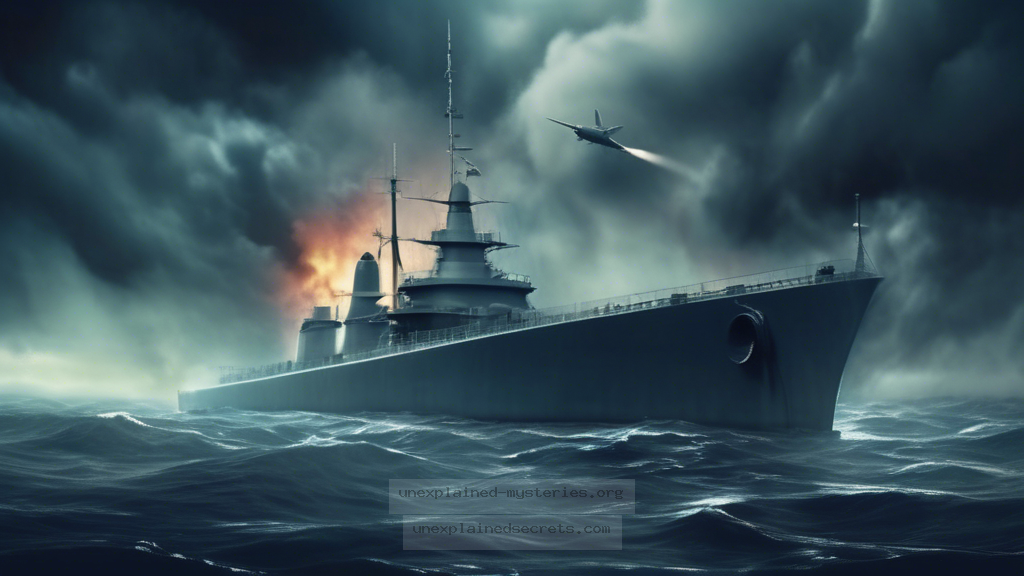Is the Philadelphia Experiment the Ultimate Government Cover-Up or an Elaborate Hoax?
Is the Philadelphia Experiment the Ultimate Government Cover-Up or an Elaborate Hoax?
The Philadelphia Experiment remains one of the most compelling and controversial conspiracy theories in American history. Was the U.S. Navy involved in a secret project that aimed to make a warship invisible, or is it merely an elaborate hoax fueled by the imaginations of conspiracy theorists? This question is not just an inquiry into a single event but delves into the larger issues of governmental secrecy, military experimentation, and the limits of scientific understanding. The implications of this mystery resonate well beyond the confines of a naval base, challenging our perceptions of reality itself.
Historical Context of the Philadelphia Experiment
The roots of the Philadelphia Experiment trace back to World War II, a time filled with technological advancements and a desperate race against time to defeat Axis powers. The U.S. Navy’s research efforts were particularly intense, leading to various experimental projects. The most notable of these was the supposed invisibility experiment conducted aboard the USS Eldridge, a destroyer escort vessel. According to popular accounts, on August 12, 1943, the ship was rendered invisible to radar and even to the naked eye, an event that led to disastrous consequences for the crew.
The tale gained traction in the 1950s when a man named Carl Allen, under the pseudonym “Carlos Allende,” claimed to have witnessed the experiment. He wrote letters to various institutions, including the Naval Research Laboratory, detailing his experiences. These accounts were soon embellished, leading to a flood of conspiracy theories that suggested the Navy had not only made the ship invisible but also teleported it to Norfolk, Virginia, and back. The story has since been compounded by elements of science fiction, UFO lore, and the Cold War’s paranoia, making it a staple of conspiracy culture.
Core Concepts of the Philadelphia Experiment
The Philadelphia Experiment essentially embodies the intersection of science, military ambition, and conspiracy theory. At its heart, the concept revolves around several key ideas:
- Invisibility Technology: The notion that advanced technology could render objects invisible, a concept that has roots in theoretical physics, particularly in the field of electromagnetism.
- Government Secrecy: The belief that the government is involved in cover-ups regarding experimental technologies and their implications.
- Paranormal Elements: The idea that the experiment led to unintended consequences, including time travel and alternate dimensions.
These core concepts provoke questions regarding the ethical boundaries of scientific exploration and the transparency of military operations. While the idea of making a ship invisible may sound far-fetched, it also raises ethical concerns about the potential applications of such technology in warfare.
Practical Evidence or Lack Thereof
Despite the sensational nature of the claims surrounding the Philadelphia Experiment, there is a conspicuous absence of concrete evidence. Official Navy records do not support the existence of such an experiment, and many historians categorize it as a myth. However, the lack of evidence does not deter conspiracy theorists, who often cite the following:
- Witness Accounts: Many individuals have come forward claiming to have witnessed the events, but these accounts are often anecdotal and lack corroboration.
- Government Denials: The U.S. Navy’s consistent denials have only fueled speculation, as secrecy often breeds suspicion.
- Scientific Theories: Some proponents argue that the principles of electromagnetic fields and light manipulation could feasibly be applied to create invisibility.
Nonetheless, the scientific community largely dismisses these claims as lacking empirical support. Theories grounded in quantum mechanics and relativity offer intriguing possibilities, but they remain theoretical and have not been realized in any practical form, especially not in the context of military applications.
Alternative Perspectives on the Experiment
While the Philadelphia Experiment is often framed as a military cover-up, alternative interpretations exist. Some historians and skeptics argue that:
- Misinterpretation of Events: The events described may have been exaggerated or completely fabricated by individuals seeking attention or notoriety.
- Psychological Factors: The post-war era was ripe for conspiracy theories, and collective trauma may have manifested in the form of fantastical stories.
- Experiments on Perception: Some theories suggest that the apparent invisibility could have been a result of optical illusions or misperceptions rather than actual technological prowess.
This perspective encourages a more critical examination of the narratives surrounding the experiment, emphasizing the importance of skepticism and critical thinking when evaluating extraordinary claims.
Common Misconceptions and Clarifications
As with many conspiracy theories, the Philadelphia Experiment is rife with misconceptions that cloud public understanding. Here are some of the most common and their clarifications:
- Mistaken Timeline: Many accounts place the experiment in the early 1940s, but they often mix up dates and events from other military operations, leading to confusion.
- Fabricated Science: The scientific principles cited in relation to the experiment are often misrepresented or taken out of context, leading to misunderstandings about how invisibility could theoretically work.
- Overstated Consequences: While some accounts claim that crew members suffered severe psychological and physical effects, these claims lack credible evidence.
Best Practices for Investigation or Study
For anyone interested in delving deeper into the Philadelphia Experiment or similar conspiracies, here are some best practices:
- Source Verification: Always cross-reference information from multiple credible sources to verify claims.
- Critical Thinking: Approach sensational claims with skepticism and consider the motivations behind the narratives.
- Engage with Experts: Consult scholars in fields such as history, psychology, and physics to gain a nuanced understanding of the subject.
By employing a rigorous investigative approach, it’s possible to sift through the layers of myth and reality that surround the Philadelphia Experiment.
Future Developments and Ongoing Research
As technology advances, the boundaries of what is possible continue to shift. Research into cloaking technology and metamaterials is ongoing, with scientists exploring the feasibility of making objects invisible to various forms of detection. However, the ethical implications of such technologies remain a topic of heated debate.
The Philadelphia Experiment serves as a cultural touchstone, reflecting our fascination with the unknown and the limits of human ingenuity. As researchers continue to explore invisibility and related technologies, the conversation surrounding these topics is likely to evolve, reigniting interest in historical events like the Philadelphia Experiment.
Conclusion: The Enduring Appeal of the Philadelphia Experiment
The Philadelphia Experiment remains one of the most captivating mysteries in American history, straddling the lines between science, military ambition, and conspiracy theory. While the evidence supporting the experiment is scant at best, the narratives surrounding it continue to resonate with those who question the nature of truth and the potential for government deception. As we move forward into an era of rapid technological advancement, the lessons learned from the Philadelphia Experiment—about skepticism, critical thinking, and the ethical implications of scientific exploration—will be more relevant than ever.
Other Articles
Recent Posts
- What Happened to Flight MH370? The Conspiracy Theories That Still Haunt Us
- What Secrets Lurk Within the Walls of the Infamous Trans-Allegheny Lunatic Asylum?
- What Evidence Supports the Existence of Bigfoot in the Pacific Northwest?
- What Happened to the Indus Valley Civilization? Unraveling the Mysteries of Ancient Urban Life
- Can Telepathy Be Scientifically Proven Through Laboratory Evidence?







